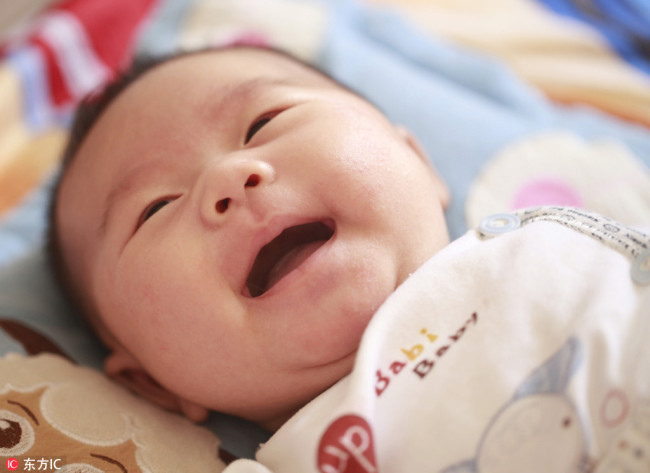Women, children benefit from better health services


The health of women and children has climbed in China because of improved services, and gaps between regions have narrowed significantly, according to a report released on Monday.
Maternal mortality - or deaths related to childbirth - in China has moved below the average of some mid - to high-income countries, while life expectancy at birth is higher than the average, according to Qin Geng, director of the department for women and children's health at the National Health Commission.
Health authorities have been improving the network of care for women and children across China and have launched various health assistance programs focusing on pregnancy in remote and rural areas. Those programs are expected to continue contributing to reducing regional gaps, he said.
Qiu Jie, president of Gansu Provincial Maternity and Child-Care Hospital in Lanzhou, Gansu, said the hospital has been cooperating with grassroots medical facilities to help them improve services, so that residents can get timely diagnoses and treatment near their homes.
A network of other hospitals and clinics for maternal and child care has been established in the province, and more than 80 percent of all maternal and child care institutes at county level or above are able to conduct emergency operations in high-risk pregnancy cases, he said.
Rural and urban maternal mortality rates have both fallen substantially since 1990 - dropping by 81.2 percent to 19.9 per 100,000 in rural areas, and falling 67.2 percent to 15.5 per 100,000 in urban areas, according to the National Health Commission report.
Last year, pregnant women in rural areas were just 1.3 times more likely to die than their peers in urban areas. In 1990, the risk was 2.2 times more likely, the report said.
The discrepancy between areas also decreased. Last year, for example, the maternal mortality rate in western areas of China, which is less developed, was 25.2 per 100,000, 2.3 times that of eastern regions. In 1996, women in western areas were 4.7 times more likely to die, the report said.
Gaps in infant mortality and the overall growth of rural and urban areas, as well as between different regions, have also significantly narrowed over the past three decades, the report said.
A major program launched in 2000 that provided subsidies to pregnant women in rural areas to encourage them to give birth at hospitals has helped to increase the percentage of hospital births to 99.8 percent in rural areas last year, up from 51.7 percent in 1996, Qin said. He noted that this has resulted in reduced maternal mortality in rural areas across China.
Qin said that, in general, women's and children's health in China has significantly improved over the past seven decades.
When the People's Republic of China was founded in 1949, average life expectancy was 35, but increased to 77 years for babies born last year, he said. Female life expectancy reached 79.4 years in 2015.
The mortality rate for babies was as high as 20 percent before 1949 because of a lack of doctors and medicine, particularly in rural areas, compared with 0.61 percent last year, he said.
- Winter harvest keeps markets supplied in Linze, Gansu
- Wanfenglin's karst peaks wear ethereal winter veil in Guizhou
- Spokesperson reiterates resolute opposition to foreign interference in Taiwan question
- Innovation sustains Beijing's winter crayfish palate
- Chinese research named among Physics World's top 10 breakthroughs of 2025
- Taiwan's ban of mainland social media app a case of political manipulation: spokesperson





































